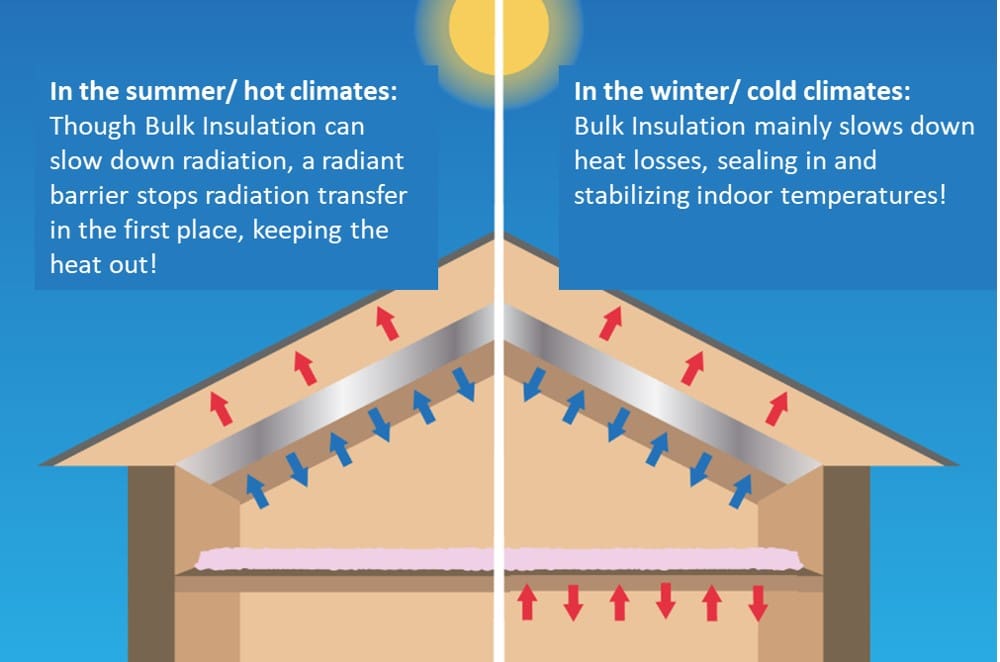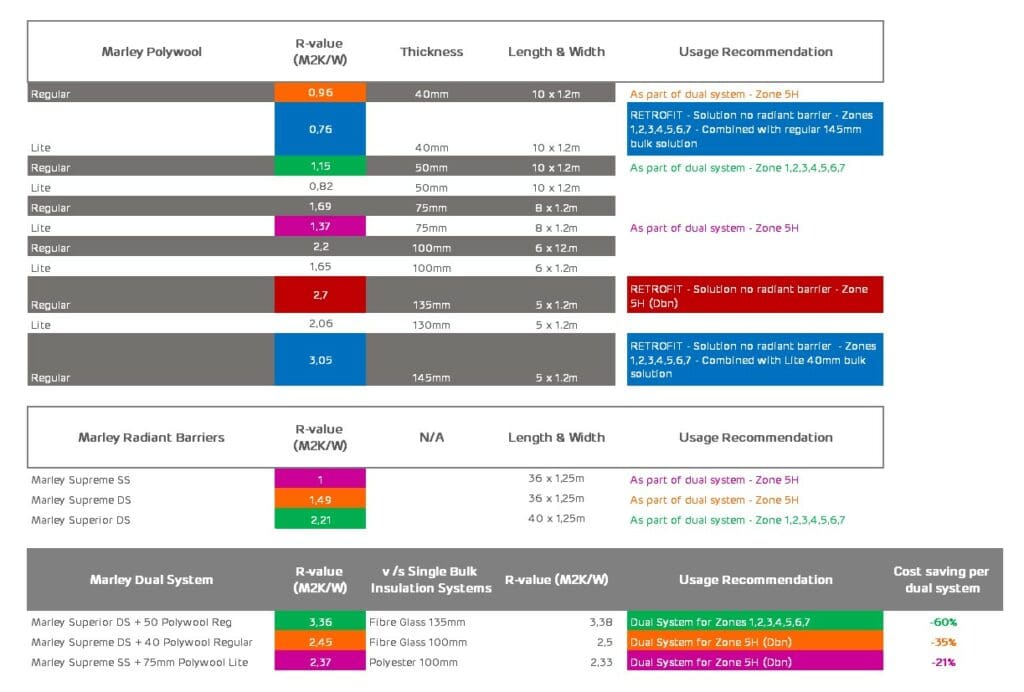The R-value is a measurement of an insulation material’s ability to resist heat flow – the higher the R-value the better the insulation performance!
How does insulation work and why is it important?
An un-insulated home is subject to considerable winter heat losses and summer heat gains. The term ‘insulation’ refers to materials or a combination thereof which provide resistance to heat flow. This can be achieved by the use of either:
- Bulk Insulation in the form of Glasswools or Recycled Polyester PET (the same stuff that is used in duvets and puffer jackets, but also spray foams and many more.
- Reflective Insulation – foil barriers and bubble foil coated insulation or foil coated batting insulation,
- or a combination of both, which work in different ways.

When these materials are installed in the roofs, ceilings, walls, and floors of a building, heat flow into and out of the building is reduced, and the need for heating and cooling is minimized. This results in more stable indoor temperatures throughout the year, with the added benefit of reduced energy costs and greenhouse emissions
Last, but not least – IT’S THE LAW!
It is now mandatory in South Africa to specify thermal insulation in certain building occupancy classes in accordance with SANS 10400-XA: 2021. Not only this, but the insulation material must comply with the:
•Fire safety requirements given in SANS 10400 part T and SANS 428
•Complies with the recommended R-value for the relevant energy zones in accordance with SANS 10400 part XA: 2021 Edition 2
What is my energy zone and what R-value must I achieve?

For energy zones 1,2,3,4,5,6, & 7 the total roof should achieve a minimum R-value of 3.7 – this means the roof and ceiling materials, together with the insulation materials. For zone 5H a minimum Total R-value of 2.7 is required for the full roof. Because it is difficult to determine each and every roof cover’s thermal Resistance value, an average value of 0.35 is assumed for zones 1 – 7 and 0.39 for zone 5H, so when we calculate how much we need for insulation only, these values are deducted from the total R-value that must be achieved.
Hence the golden values for insulation are:
3.35 m2 K / W for zones 1 – 7
2.31 m2 K /W for zone 5H
See the table below to establish in which zone your area is based.

How we hit the R-value sweet spot with the best of both systems whilst achieving massive cost savings!
As we have seen, radiant barriers and bulk insulation have different purposes, though together through the correct combinations, they create the ideal insulation system! Radiant barriers stop heat transfer taking place in the first place and Polywool seals the roof cavity to slow down heat losses in the winter. Not only that, our dual sweet spot combinations can also result in cost savings of up to 60% (Zones 1 – 7) if compared with a single 135mm Fibre Glass bulk insulation and up to 35% cost savings for zone (5H) if compared to a single 100mm Fibre Glass bulk insulation.
See the table below to find the perfect combination for your situation, even if you don’t have a radiant barrier, you can still combine different thicknesses of Polywool to achieve your desired result.

When you are ready to enjoy coolers summers and warmer winter, contact us at info@marley.co.za, we’ll be glad to put you in contact with one of our insulation installers! Or if you are a DIY enthusiast, you can buy direct from Marley Roofing or we can direct you to your closest stockist.

